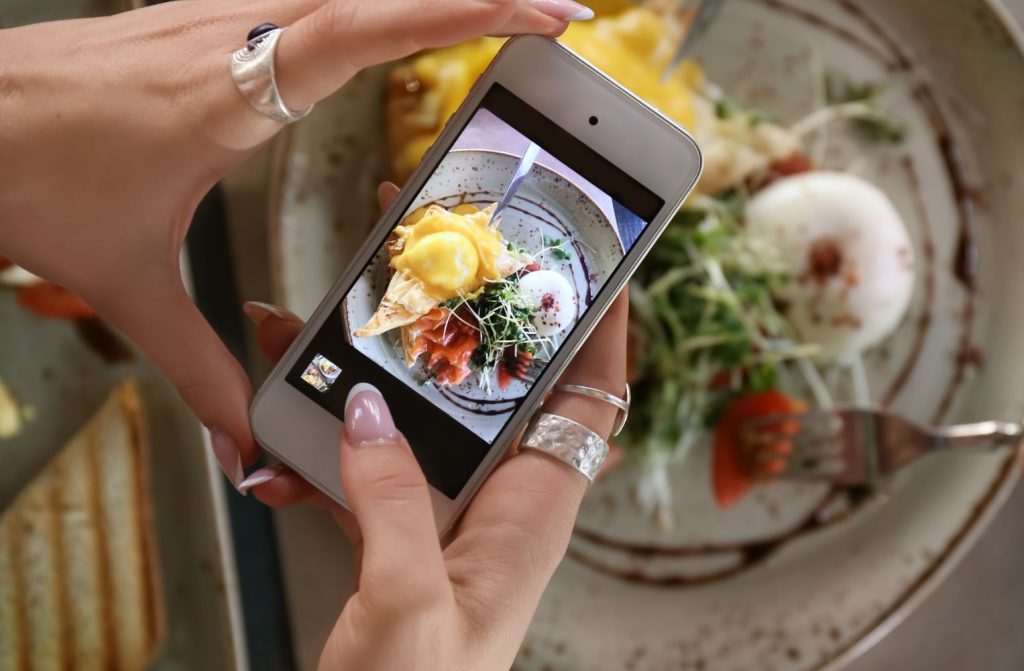In today’s fast-paced culinary world, where competition is fierce and social media reigns supreme, many restaurant owners ask themselves: Does influencer marketing really work for restaurants? The answer is a resounding yes—when done right. It’s not just a trend; it’s a powerful strategy for Google positioning, credibility, and most importantly, filling your tables.
Why Influencer Marketing Is More Than Just a Pretty Picture
At its core, influencer marketing is a modern, amplified version of traditional word-of-mouth. Instead of a friend recommending a place, it’s a digital personality with an engaged audience doing it. For a restaurant, this translates into a series of crucial benefits:
- Credibility and Trust: Followers trust recommendations from influencers they admire, seeing the content as genuine suggestions rather than traditional advertising.
- Massive and Targeted Reach: Influencers can expose your restaurant to thousands or millions of people who fit your target audience.
- Authentic Content Generation: Influencers often create high-quality visual and narrative content that you can reuse.
- Indirect SEO: Mentions and engagement on social media send positive signals to Google about your brand’s relevance and popularity. Good influencer marketing can drive direct searches for your restaurant, clicks on your Google My Business, and indirect backlinks.
- Brand Humanization: It allows your restaurant to connect with the audience on a more personal and emotional level.
- Sales Boost: Direct recommendations can quickly translate into reservations and visits.
1. Identifying the Perfect Influencer: Quality Over Follower Count
The most common mistake in influencer marketing is focusing only on follower numbers. For a restaurant, the key lies in relevance, engagement, and authenticity with their audience. An influencer with 5,000 highly engaged followers aligned with your niche is much more valuable than one with 500,000 followers who don’t interact or aren’t your target audience.
Types of influencers for restaurants:
- Micro-influencers (1,000–10,000 followers): Usually have very high engagement rates and a more personal relationship with their audience. Ideal for specific niches (e.g., vegetarian foodies, specialty coffee lovers).
- Macro-influencers (10,000–100,000 followers): Offer a good balance between reach and engagement. They could be popular food bloggers or local food critics.
- Celebrities / Mega-influencers (>100,000 followers): Have great reach but high costs and potentially lower engagement rates. Consider only if your restaurant has a substantial budget and luxury positioning.
How to find them in Medellín?
- Social media search using hashtags like #foodieMedellín, #restaurantesMedellín, #gastronomiaColombiana, #quecomerenMedellín, #planesenMedellín.
- Google searches like “best food bloggers Medellín,” “food critics Colombia.”
- Influencer platforms like Influence.co, BuzzSumo, or Social Blade.
- Observe your competition: Who are other restaurants collaborating with?
Key selection criteria:
- Relevant audience: Are their followers the kind of customers you want to attract? Do they live in Medellín?
- Engagement rate: More important than follower count. Comments, likes, shares, saves—do people interact with their content?
- Authenticity: Is their style genuine? Do they seem honest in their opinions?
- Content quality: Do they produce professional, appealing photos and videos?
- History: Have they worked with similar restaurants? Were previous collaborations successful?
- Reputation: Do they have a good image? Avoid those involved in controversies.
2. Developing a Clear Collaboration Strategy: Beyond a Free Meal
Once you identify the influencer, the proposal should go beyond just offering a free meal. It’s about a strategic collaboration that provides value to both parties.
Types of collaborations:
- Authentic reviews: Invite the influencer to experience the full dining experience and ask for an honest review on their channels.
- Sponsored content creation: The influencer creates posts, videos, or story series highlighting your restaurant in exchange for a fee (or a mix of payment and courtesy).
- Exclusive events: Invite a select group of influencers to a tasting night for a new menu or launch event.
- Contests and giveaways: Organize giveaways on the influencer’s profile (e.g., “Win a dinner for two at [Your Restaurant]”).
- Account takeover: The influencer runs your social media for a day, generating interaction.
- Special dish creation: Collaborate with an influencer to design a limited-edition dish named after them or inspired by their style.
Value proposition for the influencer:
- First-class culinary experience: Ensure their visit is flawless.
- Content opportunities: Access to the kitchen, chef, special ingredients.
- Flexibility: Allow them to create content that resonates with their style.
- Fair compensation: Monetary, in-kind, or a combination. Micro-influencers may value experience and content more, while macro-influencers usually require payment.
Contracts are key: Clearly define expectations—number of posts/stories, platforms, publishing dates, hashtags to use, content usage rights.
3. Measuring Success: Does It Really Work for Your Restaurant?
Measurement is essential to know if your influencer marketing investment is paying off and to optimize future campaigns.
Key metrics to track:
- Reach and impressions: How many people saw the posts?
- Engagement: Likes, comments, shares, saves—did the audience interact?
- Website traffic: Increase in visits after posts. Use custom UTM links for each influencer.
- Brand mentions: More mentions of your restaurant on social media.
- Direct conversions:
- Reservations: Increase in online bookings or mentions when booking by phone.
- Walk-ins: Increase in foot traffic (harder to attribute without codes or questions).
- Sales: Rise in overall or promoted dish sales.
- Reservations: Increase in online bookings or mentions when booking by phone.
- New followers: Growth on your own social media.
- Google My Business mentions: Did influencer content drive people to search your GMB or leave reviews?
Tracking tools:
- Google Analytics for web traffic and conversions.
- Google My Business Insights for direct search, discovery, and clicks.
- Social media stats (Instagram Insights, Facebook Business Manager).
- Discount codes or surveys to ask how customers heard about you.
4. SEO Impact: Beyond Social Media
While influencer marketing mainly lives on social media, its impact on your SEO is indirect but significant and lasting.
How does it influence SEO?
- Branded searches: If an influencer creates buzz, more people will search your restaurant directly on Google (“[Your Restaurant Name] Medellín”), signaling relevance and popularity to Google.
- Google My Business engagement: People discovering your restaurant via an influencer likely check your GMB for hours, location, and reviews. More clicks and engagement can improve local ranking.
- Online reviews: Influencers can encourage their audience to leave reviews, increasing quantity and quality of reviews on GMB, Tripadvisor, Yelp, which are critical local SEO factors.
- Brand mentions: Even without direct links, mentions on blogs or articles related to influencers boost your online authority and relevance.
- Website traffic and dwell time: If influencers link to your website, qualified traffic can improve SEO metrics like bounce rate and time on site.
- Natural backlinks: Highly successful influencer content can be picked up by other blogs or media, generating natural backlinks.
5. Integration with Other Digital Marketing Strategies: An Ecosystem of Success
Influencer marketing shouldn’t be an isolated strategy. It works best when integrated into a coherent digital marketing ecosystem.
Key synergies:
- Google My Business: Make sure your profile is flawless before a campaign. Influencers drive traffic there.
- Optimized website: Links in influencer bios or posts should lead to a conversion-optimized landing page (reservations, menu, special event).
- Paid advertising: Amplify influencer content through paid ads on their networks or yours to reach a wider audience.
- Email marketing: Collect emails from new customers coming through influencers and keep them engaged with newsletters.
- Loyalty programs: Turn new influencer-driven customers into repeat visitors via loyalty programs.
- Owned content: Reuse high-quality influencer content on your social media, website, and emails (with permission).
SEO Optimization: H1, Meta Description, and Meta Tags
To ensure this content has maximum impact on Google search results, here’s the optimization of key elements:
- H1: Influencer Marketing for Restaurants: Does It Really Work?
A direct, engaging question addressing the user’s main concern, including key phrases: “Influencer marketing for restaurants” and “does it work.” - Meta Description:
A compelling description to increase click-through rate (CTR) from search results. Concise (~150-160 characters), persuasive, and relevant.
Example:
“Discover if influencer marketing for restaurants really works to attract customers. Learn how to pick the perfect influencer and optimize your Google ranking. Complete guide!” - Meta Tags (Keywords):
Although Google’s direct ranking impact has diminished, including relevant keywords remains good practice.
Examples:
influencer marketing restaurants, food influencer marketing, does influencer marketing work, attract restaurant customers, SEO for restaurants, Google ranking, food bloggers Medellín, micro influencers gastronomy, influencer campaigns restaurants, social media restaurants
The Right Influencer: The Secret Ingredient
Influencer marketing for restaurants is not just a trendy tactic; it’s a powerful tool that, when executed well, can generate significant ROI. It’s not just about your restaurant appearing in a pretty photo—it’s about resonating with an audience that trusts an authentic voice.
By choosing the right influencer, developing a clear collaboration strategy, measuring impact, and most importantly, integrating this tactic into your broader digital ecosystem, you’ll see not only increased bookings but your restaurant gaining credibility and online positioning that will make you stand out on Medellín’s gastronomic map and beyond. Are you ready to turn social media into your restaurant’s next big customer engine?
At Digisap, we help you develop a tailored SEO and digital marketing strategy so your restaurant becomes the top choice for diners in your area — not your competitors.
Click here to schedule your free consultation and take your restaurant to the next level





